
We've got our hiking shoes on!
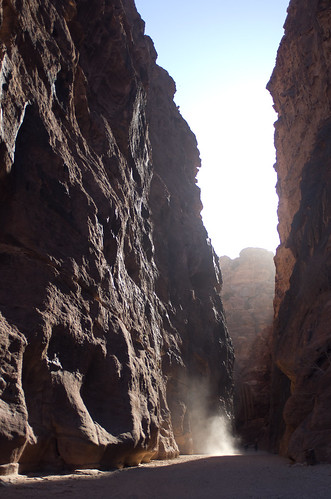
No tourists, just a bedouin on his camel kicking up dust
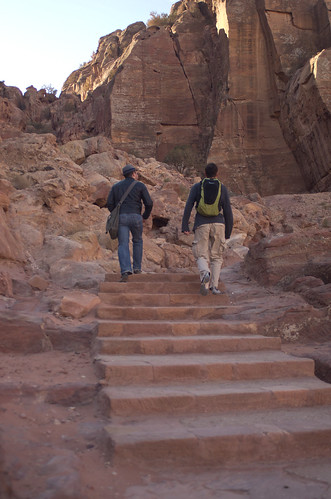
Up and up we go
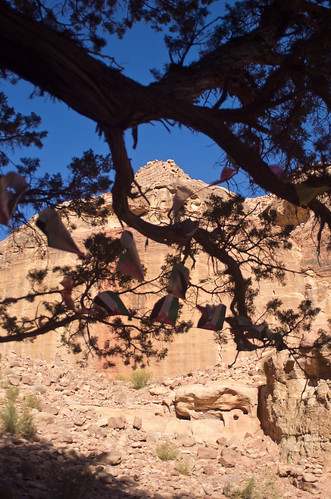
Jordanian flags in a cypress tree

Stephen being silly
The views from the top of the High Place (Jabal al-Madhbah) were absolutely incredible. We took the requisite pictures of the altar and explored the supposedly still psychically active obelisks (Zibb Attouff - I felt a thrumming, Stephen and Branson didn't, no surprise there).
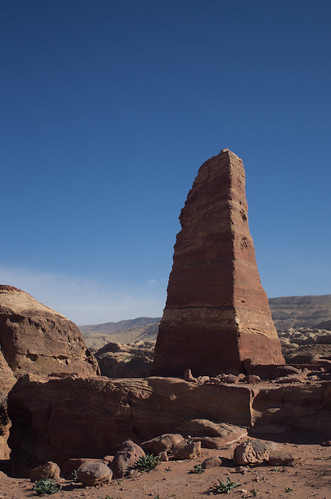
One of the obelisks

Just a little bit of perspective
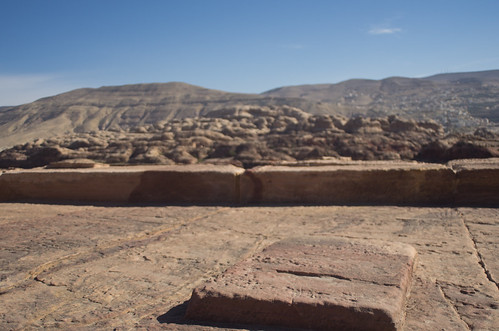
The place of sacrifice
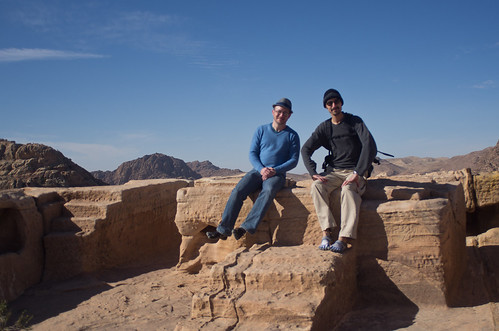
Sitting nicely on the altar

Part of the temple complex still standing
We walked down the back side of Jebel Autuff into the Wadi Farusa which led us past the old Lion fountain. This was a natural fountain from the run off from the water from the cistern high above, carved into the shape of a Lion. The body could still be seen, but the head, where the water had come out, was completely eroded away, which was a very strange impression indeed.
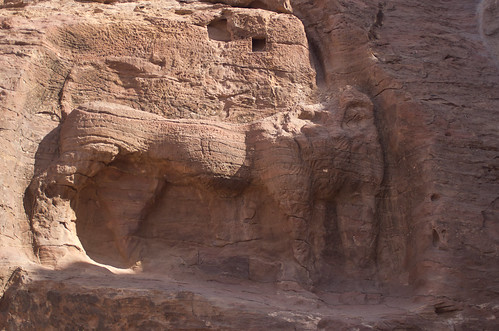
what remains of the lion fountain
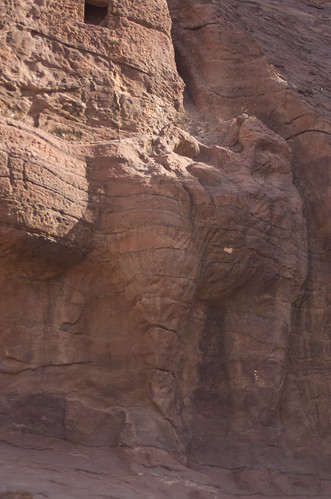
poor headless lion
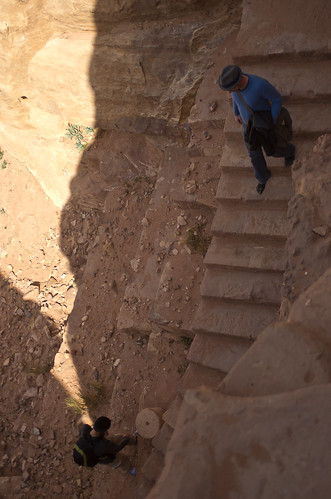
down the stairs to the wadi floor
At this point, we picked up a living feline companion of our own (one of the Bedouin's semi domesticated cats) who followed us down to the Garden Tomb. It was named after a large garden once established outside what was otherwise a relatively plain fronted tomb. The garden was kept green by an elaborate system of cisterns and pipes, the remains of which could still be seen in spots.

The Garden Tomb as you come down the steps
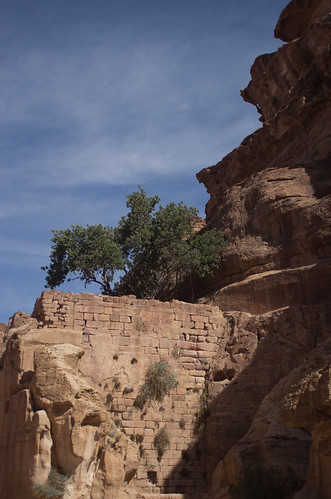
a tree growing out of one of the cisterns
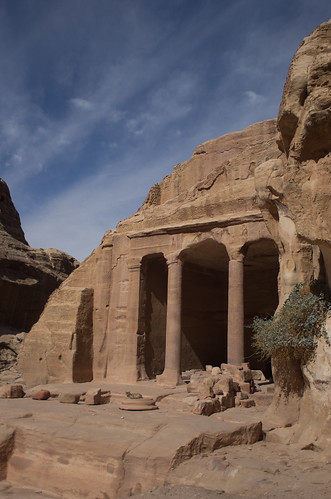
The front of the tomb, with a tiny remnant of garden
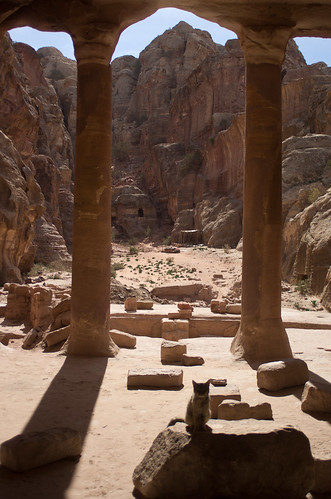
View from inside the tomb out into the wadi, also a nice picture of our feline companion
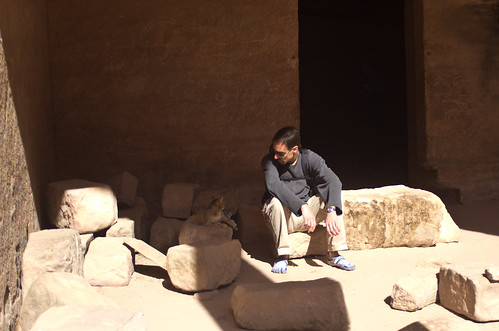
are you really going to follow us around all day?
The water management for the whole site was pretty incredible - there was no suggestion that it got any more water today than back then, and it was pretty desolate today. Seeing the remains of the various water delivery and capture systems, knowing that it had to support tens of thousands of people at one stage, is impressive and just goes to show that perhaps such ancient peoples aren't nearly as backwards as what modern mythology would suggest.
At this point, We said goodbye to the kitty (the Garden Tomb seemed to be the end of her territory), and continued little further down to another tomb (for an unnamed Roman solider) and The Coloured Triclinium. A triclinium was a special room which was dedicated to the funerary banquets common to the Nabateans. The "coloured" designation for this one was due to the extremely varied colours of the rock out of which it was carved. Unusually for many of Petra's carved monuments, the inside was just as decorated as the exterior, much of it was extremely well preserved and still visible.
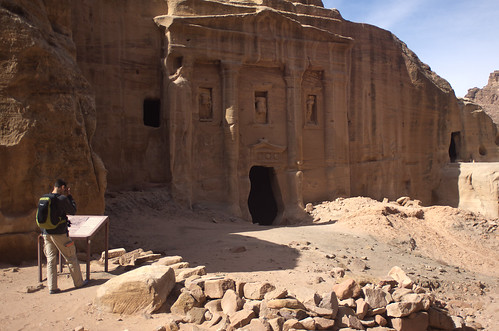
The Soldier's Tomb
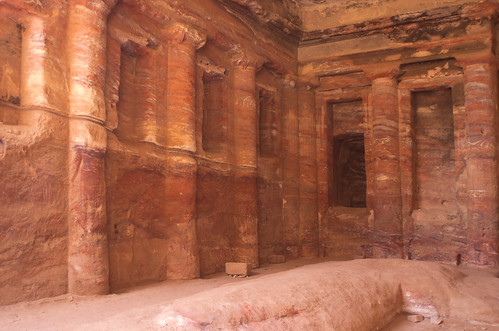
Inside the triclinium

beautiful pillars
From there we wound back down to the bottom of the Wadi which brought us out just above the main site, where we found the remains of where the normal inhabitants of Petra would have lived (mostly roped off for ongoing excavation).
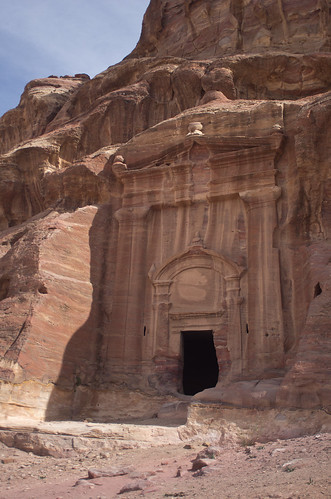
another tomb
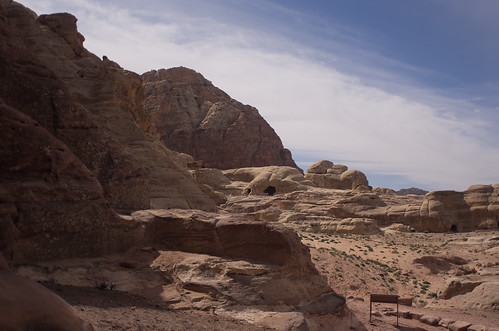
looking back the way we came
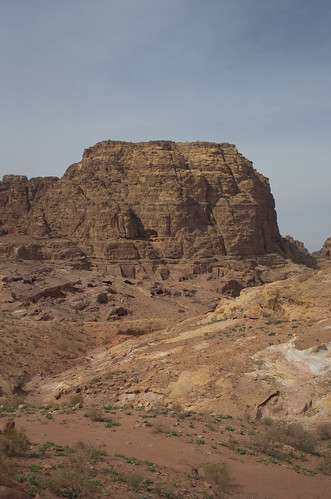
More tombs in the distance

playing photo tag in the ruins
Slightly further down the main track, we came first to a small temple and then to the appropriately named "Great Temple" above the colonnaded street.The main hall of the Great Temple was originally 160 meters by 80 meters, plus additional rooms for purification, hallways, cisterns and other not so small rooms. Much of the temple was still under active excavation and restoration (by Brown University), but there was plenty left to explore and discover.
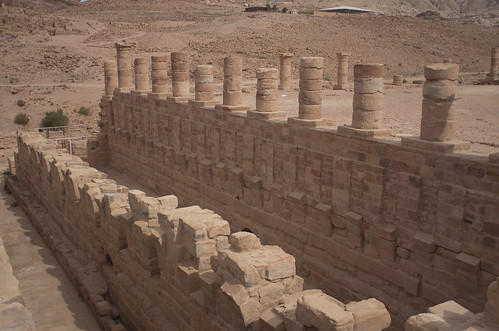
Coming up towards the main hall
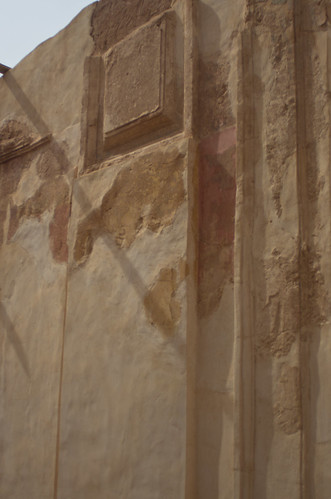
There was even a section where they had just exposed some of the original plastering on one of the walls.
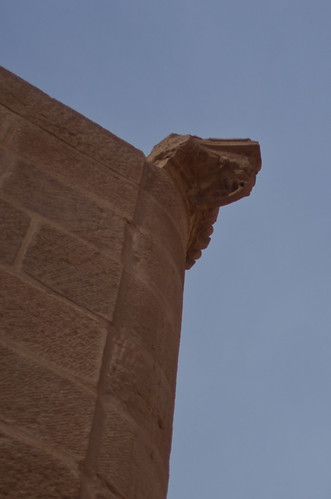
They had also recently restored one of the key features of Nabatean architecture - elephant capitals on the pillars. Elephants weren't a common feature of the region, so I'm not sure where they would have encountered them. A mystery for another day, perhaps.

The back section of the Temple
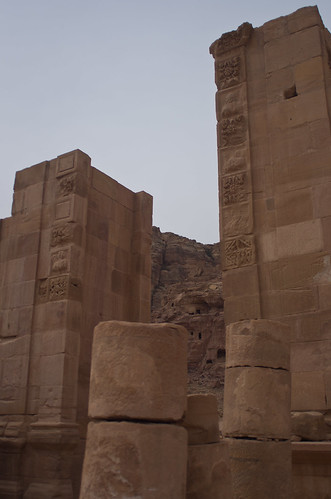
door ways with carvings still evident
At this point in the day we calculated we only had about an hour and fifteen minutes remaining before we needed to head back to the front. Unfortunately this wasn't enough time for us to hike up to the monastery or to the other mountain top, the two options we were most keen on. Teach us for lingering so long on the original hike! It was at this point that we also discovered we were starving, not having eaten since breakfast. So we opted for lunch in the basin (made up of excellent local cuisine - more salads, a phenomenal lamb dish in a yogurt sauce), looking out over some excavation works. There was a minor moment of concern when the power went out, but this was fairly quickly remedied (with no apparent concern on the part of the locals). We decided that this was probably a sign (and we only had about 45 minutes left to meet our driver) t0 take a rather brisk walk back through the tombs and the Siq to the front.
While we had an amazing time and are so glad that we took the extra half day (which day trippers don't get), we could have easily managed another day or two to see the rest of the monuments we wanted to see and do the rest of the main hikes. A third day would have been required to hike up to the Tomb of Moses which is also said to be in the same mountain range. Needless to say, coming back is pretty high on our list, though learning a small amount of Arabic would probably be a good idea. We managed pretty well for the time we were there, but it would have been nice to interact with the locals a bit more on their level. It really also must be said that all the locals we met were amazingly kind and welcoming - many (like our hotel clerk) went out of their way to help us or give us advice. Apparently the disturbances in Syria and Egypt has really reduced the numbers of tourists quite considerably, even though Jordan itself has been pretty peaceful. We are keen to come back to Jordan, not just to finish seeing Petra, but also to explore the rest of the country. It makes a huge difference to be in a place where you are made so welcome.
Anyway, from there it was just our cab ride back to the border, which our hotel was kind enough to arrange. Our driver was Hesham, who was an extremely talkative fellow speaking decent English as well as a handful of phrases in about 6 other languages! He pointed out various features along the way (including the palace of one of the princes), which made the drive pass quickly. He gave us his business card and we will definitely be looking him up the next time we're back.
Then it was across the border (that same eerie, eerie walk) to Eilat , which was just as easy as the way over. Our car was thankfully exactly where we left it and then back to the hotel to clean up before deciding on where we wanted to get dinner. We stopped at the front desk for a recommendation since our first choice was closed, and the very kind lady clerk had a voucher for a nearby Brazilian place. Sounded good to us, and indeed it was good - great even! Though we ate more red meat in that single sitting than I think any of us had eaten in the past year - but it was soooo tasty. We even got our first taste of Israeli wine Tzafit, which was a blend of Marselan, Carignon, Carmelon and Pinotage. Super yummy all around.
Not surprising, once we got back to the hotel, we all fell into a food coma. Right before that, we decided that the next day should be taken pretty easy - sleep in a bit and then choose either going to the beach or the aquarium and prehistoric copper mines at Timna. Stay tuned for which one we picked!

No comments:
Post a Comment